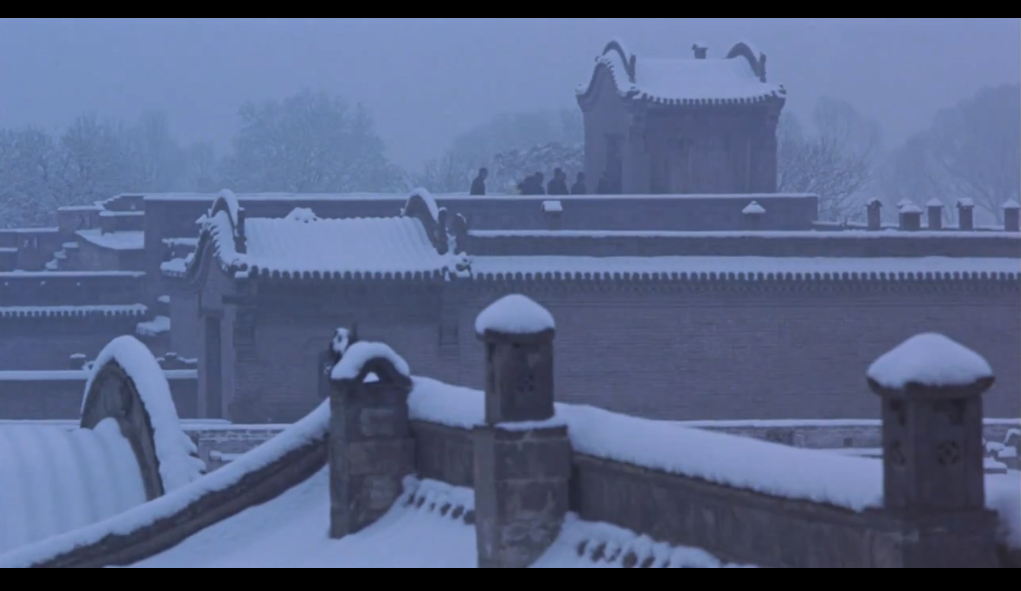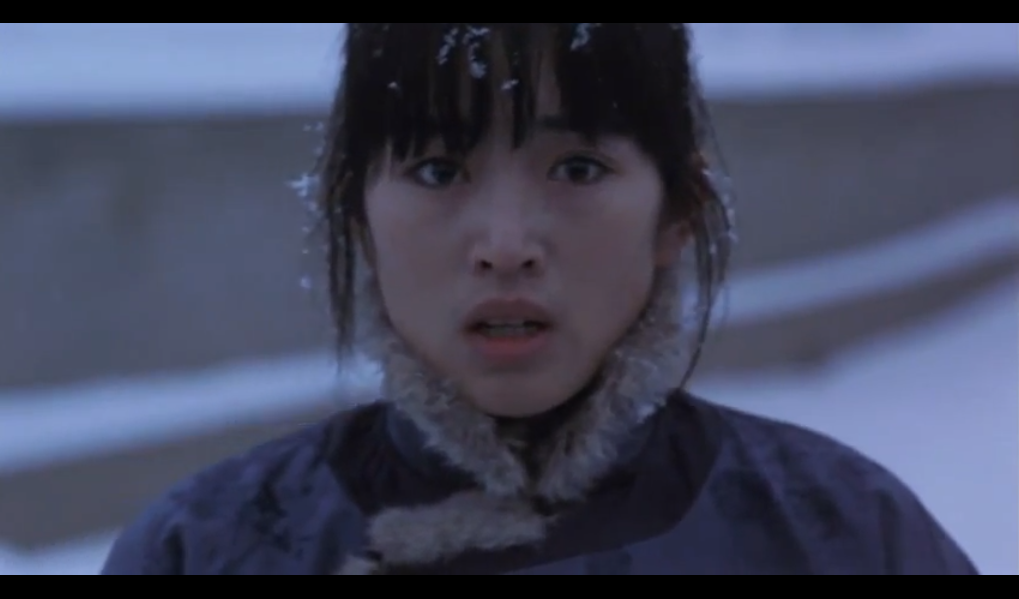Raise the Red Lantern directed by Yimou Zhang is full of symbolism as many other Chinese films. The director employs a variety of tools to convey such ideas as freedom and dependence, doom and luck, friendship and betrayal, life and death. The sequence under analysis reveals the protagonist of the film, Songlian, who witnesses the murder of the second concubine of the master. The sequence ends with the protagonist’s screams.
This sequence is also very symbolic as it reveals females’ position in the society of those days. Females were treated as things that could be removed if they were not needed. Zhang uses a number of cinematographic tools to articulate his message. It is possible to consider two shots which are conspicuous in terms of the cinematographic tools used.
One of the shots, Shot A, depicts the servants dragging the second concubine to the door of the dark room. The other shot, Shot B, depicts the protagonist’s face when she is approaching the dark room. Some of the major tools used to convey the idea of inferiority, lack of knowledge and despair in these shots are certain camera angles, a specific color scheme and depiction of complicated architecture.
Architecture is used as one of the major symbols in the sequence. Zhang reveals the idea of the complicated life the Chinese female in the early twentieth century had to live (see Fig. 1). The protagonist of the film finds herself in the huge house which has lots of rules and secrets.
The protagonist follows the people dragging the poor woman. Scene A represents the maze of the architecture and the end of the second concubine (see Fig. 1). The complicated architecture stands for women’s unawareness of their true position and their subordinate roles.
Songlian will have to go through different passages to find out the truth and this way is a symbol of her own reasoning. She is wondering in her doubts as she does not understand her place in this house and she does not understand whether she is ready to accept it. However, her long way will end near a small room where the second concubine is hanged. This small room is also a representation of the inferior position of the woman who is placed in a tiny room to die (or rather to be killed).

Figure 1: Shot A. Servants drag the second concubine to hang
The sequence in question is remarkable for the use of color. To convey the idea of ambiguity and uncertainty, Zhang uses dimmed grey and blue color. It is snowing and there is almost no sun light. It is necessary to note that even snow is not white. It only adds obscurity to the scene. The protagonist is wondering in her doubts and she does not see the picture clearly. She does not understand what the real position of a woman is.
She is walking through dimmed passages to find out the truth. It is also necessary to stress that there is almost no black color. Zhang emphasizes that even though women had to live in complete darkness (or rather blackness), they could not clearly understand it. Women of that period did not see that they were confined to certain roles. Women were wondering in the dusk.
The dimmed color scheme stands for Songlian’s unawareness of the second concubine’s destiny and her own future. The scene is also characterized by a specific camera angle. It is a long shot which is used to show the dimmed future of women. Songlian can see everything from certain distance and she only understands that there is something bad and wrong, but she does not see what exactly is going on.

Figure 2: Shot B. Songlian approaches the room where the second concubine was hanged
At the same time, Scene B shows Songlian’s face (see Fig.2). The young woman is hesitating. She is afraid of what she can see. However, she still goes to the room to see what they have done to the second concubine. Her face reveals her fear and her doubts. She is afraid to find out the truth but she is determined to do it no matter what.
Notably, Zhang employs the same tools as in the scene A. The prevailing colors are grey and blue. There is no bright light. Of course, there is no depiction of architecture as close-up is used. However, the walls in the background remind the viewer of the maze. The walls in the background suggest that the protagonist is in a certain cage.
These two scenes help Zhang create the contrast. Thus, there is a long wondering to learn the truth and there is some inner state (fear, hesitation and determination). The two scenes are central to the film as this is the point where Songlian understands that she is doomed to be treated as a thing. She also understands that women are treated as inferior creatures that do not deserve much respect.
Zhang also employed quite specific camera angles. The long shot depicts the people dragging the woman (see Fig. 1), whereas the close-up (see Fig. 2) reveals Songlian who is following the men. The long shot helps reveal the idea of certain distance.
Thus, the protagonist is alienated from what is happening. She is watching everything at certain distance. However, Zhang focuses on Songlian’s feelings, i.e. her anxiety, hesitation, fear, reluctance and eagerness to find out what is going on. The close-up helps Zhang reveal the protagonist’s emotions.
On balance, it is possible to note that the shots in question focus on the idea of females’ inferiority in the society which is conveyed with such tools as the use of a particular color scheme, the use of specific camera angles and symbolic depiction of complicated architecture. Zhang manages to recreate the world of the protagonist who is imprisoned in a complicated structure of a building and a complicated structure of the Chinese society of the early twentieth century.